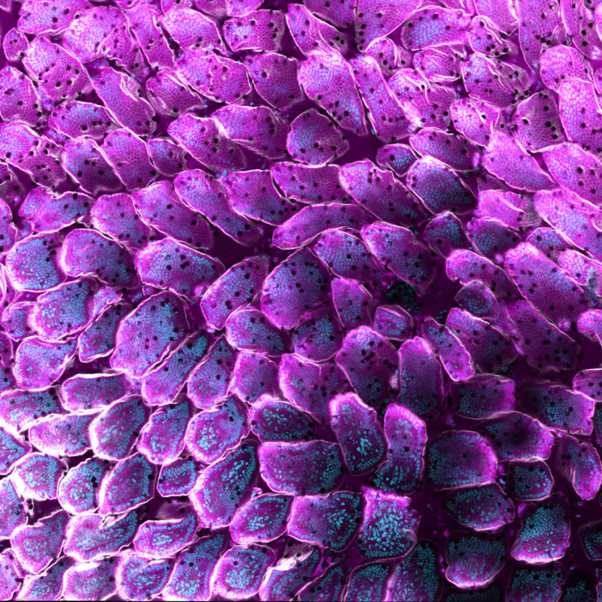Colored cells in the colon offer insights in the development of cancer | de Volkskrant
6 Nov 2020 13:00
It may resemble the leaves of an artichoke, but what we see here is the inner lining of the colon of a mouse: especially for this microscopic photograph, the villi were given a color to allow biomedical researcher Lotte Bruens of the Netherlands Cancer Institute better insight in what goes on there.
Villi are made up of thousands of cells. The light blue dots are the nuclei. These villi line the entire intestine with small depressions (“crypts”) between them for cell division. The new cells are pushed out of the crypts, almost like on an assembly line: new cells are created at the bottom of the villi, and old cells fall from the tip into the colon towards the exit. This allows the colon to digest the entire lining every week, even in humans. And that’s a good thing, because the colon sees many harmful substances that could cause mutations in cells that can cause cancer cells. The sooner these mutated cells are evacuated from the crypt, the better.
Bruens, who is to defend her thesis on November 19, found out that this colon cleansing process improves if the animal only ingests 60% of its daily caloric needs. Research into the human colon will see whether this is the case for us as well.
 nl
nl
 Nederlands
Nederlands
